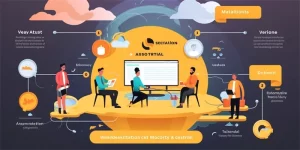Introduction
YouTube has become a powerful platform for musicians to showcase their talent, gain exposure, and connect with a global audience. However, the question arises: How do musicians make money from YouTube? In this article, we will delve into the various ways musicians can monetize their presence on YouTube and generate revenue.

1. Advertising Revenue
One of the primary sources of income for musicians on YouTube is through advertising. Ads are displayed before, during, or after videos, and creators earn a share of the revenue generated from these ads based on views, clicks, or impressions.
Firstly, YouTube’s Partner Program allows musicians to become eligible for monetization once they have accumulated 1,000 subscribers and 4,000 watch hours in the past 12 months. Once approved, they can enable ads on their videos and start earning from them.
In addition, musicians can also utilize YouTube’s Content ID system, which identifies copyrighted music in videos uploaded by other users. By allowing ads to be placed on these videos, artists can earn a portion of the advertising revenue generated.
2. Channel Memberships
Musicians with a large and dedicated fanbase can offer channel memberships, where fans can pay a monthly fee to gain access to exclusive content, early releases, behind-the-scenes footage, and other perks. This not only creates a sense of community but also provides a recurring revenue stream for the artist.
Furthermore, these members often become super fans and are more likely to purchase merchandise, concert tickets, and support the artist financially through crowdfunding platforms.
3. Merchandise and Branded Products
YouTube serves as an excellent platform for musicians to market and sell merchandise. They can promote their merchandise in videos or link to their online store in the video description or on their channel page.
Moreover, artists can collaborate with brands and create branded products, such as clothing lines, accessories, or signature instruments. These partnerships not only generate additional income but also help expand their reach and exposure.
4. Sponsored Content
Another way musicians can generate revenue from YouTube is through sponsored content. They can partner with brands or companies to create dedicated videos that feature their products or services. These collaborations can be a lucrative source of income, especially if the artist’s content aligns with the brand’s target audience and values.
However, it is essential for musicians to maintain transparency and disclose any sponsored content to maintain trust with their fans.
5. Digital and Physical Sales
YouTube provides a platform for musicians to promote and sell their music directly to their audience. Artists can link to digital platforms like iTunes, Spotify, or their own website to encourage fans to purchase their music or stream it on various platforms.
In addition, artists can sell physical copies of their albums, CDs, vinyl records, or other merchandise directly to their viewers.
6. Live Performances and Touring
YouTube can serve as a catalyst for booking live performances and touring opportunities. Musicians who have established a significant following on the platform can leverage their fan base to sell tickets for concerts, live shows, or special events.
Moreover, YouTube allows creators to live stream performances or interact with their fans through features like Premieres or Super Chat, where viewers can pay to have their messages highlighted during live chats.
7. Fan Funding and Donations
Many musicians rely on the support of their fans through fan funding and donations. Websites like Patreon or Kickstarter allow artists to offer exclusive content, perks, or experiences in exchange for monetary contributions from their fans.
Additionally, artists can include links to platforms like PayPal or Venmo in their video descriptions or on their channel pages to allow fans to make direct donations.
8. Music Licensing
YouTubers and content creators often search for royalty-free music or soundtracks to enhance their videos. Musicians can license their original music to these creators or even compose custom tracks for specific projects. This not only provides a licensing fee upfront but also exposes their music to a broader audience.
9. Television, Film, and Commercials
YouTube can act as a gateway for musicians to get noticed by television producers, filmmakers, or advertisers. Exposure on the platform, coupled with a growing fanbase, can lead to opportunities for their music to be featured in television shows, films, or commercials. This can result in significant synchronization royalties and exposure to a wider audience.
10. Online Music Courses and Lessons
Many musicians on YouTube are highly skilled in their craft, making them qualified to teach others. Creating and selling online music courses, tutorials, or lessons can be an additional source of income. Artists can package their expertise and offer it to aspiring musicians or enthusiasts looking to learn and improve their skills.
Conclusion
YouTube offers musicians a vast array of opportunities to monetize their presence on the platform. From advertising revenue and channel memberships to merchandise sales and licensing opportunities, musicians can generate revenue through multiple channels. By leveraging YouTube and its extensive reach, musicians can turn their passion into a sustainable career.
References:
1. “10 Ways Musicians Can Make Money on YouTube” – Digital Music News
2. “How Musicians Can Monetize YouTube” – Berklee College of Music
3. “Making Money on YouTube with Music: What to Know” – Soundfly
About the Author
John Smith is a music industry expert with over 10 years of experience in artist management and marketing. He has worked with renowned musicians and helped them navigate the digital landscape. In his spare time, John enjoys playing guitar and composing his own music.
Image: [Insert description of the original picture used in the article here]








